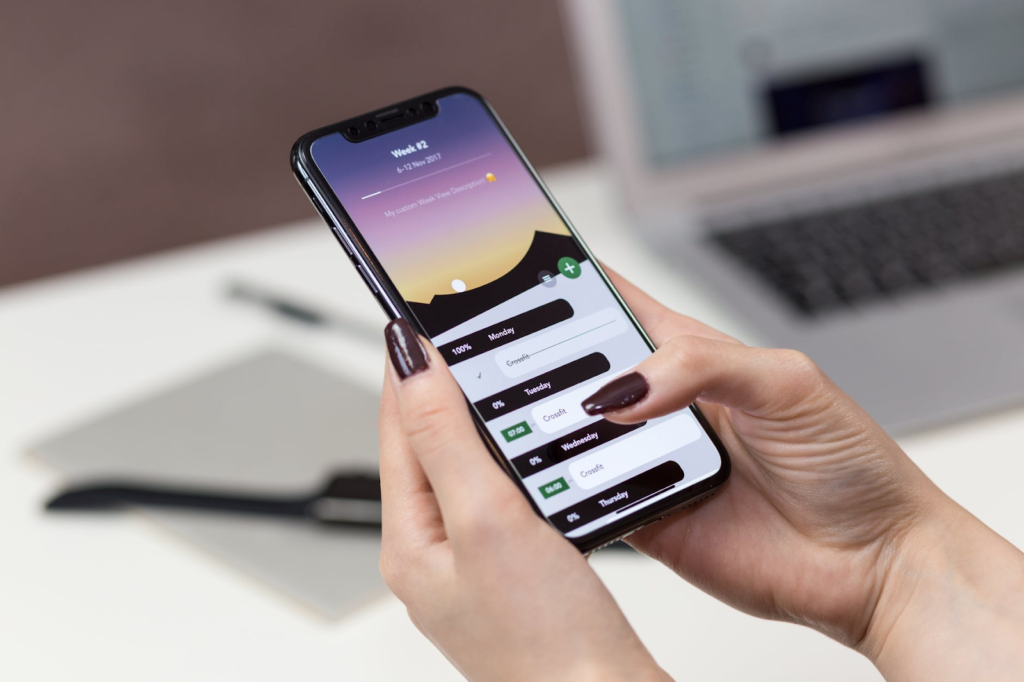
Source: Pexels (CC0 License)
Apps are an essential tool that organizations should consider offering to provide users with an exceptional customer experience. Over the last few years, there has been growing support for progressive web apps, or PWA. The great thing about a PWA is that it combines the functionality of a native app, with the accessibility of a website. Many have started to question whether or not it is possible for PWAs to completely replace native apps in the future, stirring a PWA vs native debate.
Read on to learn more about PWA vs native apps, or if you need help choosing which option is better for your business, feel free to reach out and we’ll help!
For Developers: The Difference Between PWA vs Native Apps:
As you can imagine, the development of a progressive web app vs native app are actually quite different. From a developer’s perspective, native apps are coded to be installed on smartphones, tablets, and other smart devices based on the operating system and hardware associated with the device.
PWAs on the other hand, are basically websites styled like apps that can be run either inside a website browser or installed directly onto the device and accessed like a native app. A PWA uses CSS, Javascript and HTML while Native apps are developed with the programming language for individual platforms, including Java which is the most common language for Android and Swift or Objective-C for iOS. This makes developing a PWA much faster and easier, because you only need to build one version that can be displayed seamlessly on almost any mobile device’s web browser.
Cost of Development & Maintenance
Because of this simple scalability, one advantage of PWAs is that they can be significantly cheaper to develop as compared to building a native app. Native apps are typically not responsive across different devices and screen sizes, so you will likely have to build a suitable version for each device you plan to support. A PWA acts like a website and is powered by your browser, so it can be responsive and adapt to work on any device.
When building a native app, you will also have to build separate apps for iOS and Android. Further resources will then be required in order to update and maintain each supported version in their respective app stores, generally using totally different programming languages. Depending on your overall purpose and app complexity, this can require a great deal of time and money. By contrast, progressive web apps have one codebase that is suitable for multiple platforms and devices, which makes it easier and less expensive to develop or maintain.
Updating a native app can also be time-consuming and demanding. You will need to get every update to your app approved on the store, and you will also need to update every version of the app. Knowing what mobile users are like doesn’t make things any easier. People won’t be updating their apps at the same time, so it’s entirely possible for you to have different versions of your app all out there at the same time, which can make things confusing.
Convenience
With a native app, in addition to having to build separate versions for every platform, you will also need to submit them to various app stores, maintain store listings, and manage user reviews. In addition, each time you add new features to a native app you will need to resubmit the updated version to the app stores for approval. Then your users will have to update to the new version.
The Apple App Store and Android’s Play Store are the two biggest options, but they aren’t your only choices. You also have the Windows Store and the Amazon App Store to consider as well. Depending on your app’s purpose and platform, you may want to submit the app to additional app stores like the Samsung Galaxy Store, Apptoid, and F-Droid. You have to make sure that your app is able to pass a number of requirements if you want to get published. In some instances, you may also need to pay to get your developer account registered.
PWAs bypass all of these obstacles. The only thing that your users need to have is a website browser and your URL. This makes it much easier for your app to be accessible to a wider audience. With a PWA you can usually update and deploy your changes without approval or additional installs by your users because updates go live instantly. This makes PWAs more convenient for you as a developer, and your users.
That’s not to say web stores are a bad thing. In fact, it’s these stringent requirements that prevent many poor quality or malicious applications from being published. Having published apps on these storefronts can increase the general reliability of a company in the eyes of their customers. It’s also possible for Web Stores to do the promotion of the app for you. Being featured in an app store can give you a sales boost and a quick way to increase brand awareness.
SEO & Discoverabilty
Native applications themselves cannot be indexed, therefore its content cannot be listed in SERPs. App stores provide an app “listing” page which can be indexed, but you have limited flexibility on the content of the listing page. This really forces companies to rely on getting found via the app store. There are a number of factors that influence app discoverability which is essentially PWA SEO for the app store, or app store optimization (ASO). It will involve you doing keyword research, writing a good description and an optimized title, including engaging imagery, and earning positive reviews. You will need to take good screenshots, post your app in the right categories, and reach out to third parties so you can get some good reviews and downloads. All of this will take a lot of time, and it will cost you as well.
If you put in the proper effort to optimize your app store listing and gain a steady number of reviews and downloads over time, users will find your app with ease. That being said, there are millions of apps on the web stores from Windows, Apple, and Google. It’s imperative that your app is easy to notice, valuable, and unique if you want to stand out from the crowd.
PWAs on the other hand work just like a website, meaning you can get indexed by a search engine. This comes with its own set of challenges, but when you compare a PWA to a normal app, you will soon find that you can rank in a very similar way, albeit with a different method. While you will miss out on the potential of being featured on an App store’s font page, you will have far more control over PWA SEO and your Google Search capabilities can arguably make your application more discoverable.
As mentioned above, there are steps you can take to get your native app ranked. The same concept applies to your PWA. You need to implement an SEO structure which will be very similar to that of your website. You need to avoid duplicate content and you also need to pay attention to any hashtags, as the Googlebot will not pay attention or index anything that comes after this symbol.

Security
PWAs are more secure when you compare them to normal website apps because they have to run with HTTPS. These protocols ensure that absolutely no exchanges between the server and client are hackable. If you have a secure environment you can be confident that when your customers enter their personal details or credit card, they are safe in doing so.
On the other hand, when you have a native application, you have the option to build in a lot of different security measures. If your app does require some kind of login, then you can easily implement tools like multi-factor authentication to ensure security. Users are also way more likely to trust in an app they found on a Web Store as opposed to a URL as all apps are required to pass through the store’s security requirements before they get published.
For Users: The Difference Between PWA and Native Apps
So now you know the difference between PWA apps and native apps from a developer perspective, it’s time to move onto PWA vs native and the differences from a user point of view.

Installation
Did you know that the average mobile user installs on average, less than one app every few months? A lot of this comes down to the fact that it requires a lot of commitment to get to the end of the installation process. Users have to find the app in the store, wait for the download and installation to complete, and provide the app with any necessary permissions before they ever open it. From there, they may use the app once or twice before it gets deleted. When users uninstall an app, there’s a high chance that they will not come back.
One of the primary concerns that a lot of people think about when they install an app is how much memory it takes up. Progressive web apps require no installation. When you look at the browser, visitors can easily bookmark and then add the application to their home screen. The PWA will show on the home screen, in their app directory, and it will also send notifications. In addition to this, progressive apps do not take up as much space when compared to full apps. With a URL, visitors can access and share the app with their friends too.
Updates
PWAs tend to be up to date most of the time because it loads up from a server without any action from the user. Native apps need to be updated on both sides, meaning the company who developed the app has to make sure that they are fixing any bugs or security flaws, and the user needs to make sure that they download the latest version to ensure they have a good experience overall.
Performance
When you compare it to a mobile or even a responsive site, you will soon see that PWAs are able to load much faster. At the heart of any PWA are scripts that run in the background that are completely separate from the website page. You can manage requests, prefetch, and even cache responses or sync data. This is all done through a remote server. This means that after your app has been added to the home screen, you can load it up instantly and can even use it offline or in poor network conditions (more on this in a second). The one issue is that PWAs run from a browser and this means that there can often be latency, or more battery consumption when compared to a native app. Because native apps can tie into the operating system, your hardware can deliver a better experience. Native code is faster and a native app, when you break it all down, is actually more powerful.
Because native apps must be developed for the specific device you are using it on, they can easily leverage platform-specific tools and take full advantage of all the features that are provided by the operating system. When you have a PWA, you can’t take full advantage of these features, so native apps tend to function better overall for this very reason. Native apps are more expensive to make, but the benefits of them do make them worth the money if you want to fully commit to making your app performance the best that it can be on every device.
Offline Functionality
If you are a PWA user, you can enjoy the benefits of offline mode because PWAs function in even the weakest network conditions. The connected pages can easily show whatever precached content that is available. This is done through service workers, which will refer to any Javascript components that are able to manage the requests or the transactions between a server and the user.
A native application can also show your content and functionality that was cached when a connection was present. This can be done through local data storage, but it can also be done through cloud data synchronization. Many native applications are built with full offline functionality.

Geofencing
One advantage afforded to native apps is something known as “geofencing.”
Geofencing essentially helps developers set up virtual boundaries. When a user steps into one of these pre-defined boundaries, the downloaded application can trigger an action on the phone. When you combine this feature with push notifications, you will see that geofencing gives users the chance to get useful, real-time updates which help developers engage with their users.
For example, geofencing could be used by businesses to make customers aware of in-store promotions as soon as you are near the store. Geofencing can also be used to craft better targeted ads, location-based features in apps like Snapchat or Pokemon GO, and much more.
Additional Features
Customer engagement is much more effective when you know that your app has access to a user’s device. When you have this kind of access, you have a fantastic marketing tool which will help you to inspire interest. The app can be used to reach out to a very specific target audience and it also means that you can pick out a time, location, or anything else to trigger notifications.
Native apps and PWAs have the ability to access device features. This can include your NFC, GPS, camera, accelerometer, and media player. A progressive web app has some restrictions when it comes to your device. It can vary depending on the device you are using. If you are using an Android, then you will have more access to the features when compared to those who are on an iOS. A lot of these crucial details will depend on who you want to market to, but at the end of the day, it will really help you to know differences like this when it comes to your app launch.

When to Use a PWA vs Native App
Both native apps and PWA apps fit and cover a huge range of business requirements. Before you go ahead and make the decision as to which one you want to choose, it’s important for you to consider all of the resources you have so you can make the most out of your time and your money.

When Should You Consider a PWA?
So, now that you know what a PWA is, in which situations would you benefit from choosing a PWA vs native app? If you have an e-commerce site and you want to try to better engage your clients or obtain new ones, but don’t have the resources to develop and maintain multiple applications across different storefronts, a PWA can help you to improve your strategy and customer retention.
A PWA app would also be a good solution if you want your app to reach a lot of people in a very short amount of time. PWAs are ideal if you are already able to reach a huge amount of people with your existing distribution channels, as it is easy for you to share a URL link or even earn a feature on Google search results.
If you’re a young business and want a very simple app to drive engagement for your users, PWAs don’t require any downloads or installation, but still allow you to interact with customers through things like push notifications.
At the end of the day, if you need one simple app that will work on a huge range of devices, then a PWA is likely the right choice for you thanks to their scalability and lower cost of entry for your business.
When Should You Consider a Native App?
You should think about investing in a native app if you have a complex product that will benefit from increased control over a user’s mobile device. This could include banking apps, or even social media, and dating platforms. These apps need to offer a deeper level of consistency across the board, so your team will benefit from the additional options afforded by building a native app.
A native app is preferable when creating high-security apps that will handle things like sensitive client data in industries such as finance, health, or banking. To provide an appropriate amount of security, the advanced control provided with a native app is required.
If you consider speed and user interface to be a key factor for your users, then a native app would be a better option. A native app will help you to get a much faster loading time as it uses the device’s operating system directly and it’s not at all constrained by the quality of the internet connection or the device’s operating system. This is especially the case if you are developing apps that rely on low latency, such as games or messengers.
Credibility is another reason why you would want to consider a native app. If you want to build credibility for your brand, having a high-quality app published on a top store from Apple, Google or others will help you to boost your reliability in the eyes of customers.
A lot of people in this day and age want to try and take advantage of the latest smartphone features. Native apps are much better at exploiting device features like geofencing, sensor detection, and more.
Examples of PWA
Starbucks:
Starbucks implemented a Progressive Web App (PWA) for its ordering system, providing the coffee giant with enhanced functionalities beyond those of a conventional website. Through the Starbucks PWA, patrons can effortlessly place their orders, explore the menu, and enjoy various other features without the need to download a separate mobile application.
An exceptional advantage of this PWA is its offline availability, enabling customers to peruse the menu and add items to their carts even when they lack internet connectivity. When connectivity is restored, they can promptly return and finalize their orders.
PWAs excel in terms of speed, facilitating swift order placement for Starbucks customers, particularly those seeking a quick and convenient on-the-go experience. These PWAs load efficiently, ensuring a seamless purchasing journey.
Furthermore, PWAs possess the advantage of compact size compared to regular apps, consuming less storage space on mobile devices. This aspect increases the likelihood of customers having sufficient room on their devices and retaining the PWA, even in situations where storage space is limited.
Uber:
Uber, the popular ride-sharing company, has embraced a progressive web app (PWA) as a crucial step towards expanding its presence in untapped markets. Recognizing the need to replicate the seamless booking experience provided by its native mobile app, Uber made the decision to completely overhaul its original website in favor of a PWA.
One of the primary advantages of Uber’s PWA lies in its compatibility with slower networks, making it accessible even in areas with limited connectivity. Furthermore, the PWA’s compact size ensures that it occupies minimal storage space, allowing a wider range of users to engage with the app, regardless of their network and storage resources.
Remarkably versatile, the Uber PWA can be accessed effortlessly on 3G or 2G networks, accommodating users with low-end devices and those who prefer occasional usage without permanently installing the native mobile app.
By virtue of its efficient design, the Uber progressive web app can be downloaded within seconds. This swift download process not only reduces bounce rates but also prevents potential customers from seeking alternatives among Uber’s competitors, thus contributing to the company’s market dominance.
Google Maps:
Google has introduced a PWA variant of its Maps application, specifically designed to cater to smartphones with limited bandwidth and computing capabilities.
This streamlined version of the app offers a significant portion of the functionality found in its full-fledged counterpart while occupying significantly less space on users’ mobile devices. Consequently, a larger user base can now access the Google Maps platform.
There are multiple avenues through which users can access the Google Maps PWA. Similar to other progressive web applications, it can be easily accessed by launching the mobile browser on a smartphone. Alternatively, Android users have the option to download the PWA from the Google Play Store.
The primary advantage of developing the Google Maps PWA lies in its ability to attract a wider audience. While it may not provide all the features present in the native mobile app, it still offers accurate directions and valuable information about businesses, such as their operating hours.
BMW:
BMW, the renowned automobile manufacturer, recognized the need for a significant upgrade to its mobile website and wisely chose to embrace progressive web application (PWA) technology.
The newly developed PWA was specifically tailored to cater to the interests of car enthusiasts seeking the latest BMW models. The platform’s attention to detail was exceptional, with a sleek and captivating design. The progressive web app boasted impressive features such as lightning-fast load times, offline functionality, and minimal storage requirements.
Following the launch of their progressive web application, BMW experienced remarkable and immediate results. One of the most notable achievements was a fourfold increase in the number of consumers transitioning from BMW’s main page to the sales site. Additionally, the new PWA loaded four times faster than its predecessor. BMW also witnessed a significant 49% surge in site visits and achieved a 50% growth in its mobile user base.
Contrary to the assumption that the BMW progressive web app may primarily consist of static content, the reality is quite different. BMW displays a profound understanding of its target audience and comprehends the type of content that drives engagement among potential customers. Therefore, the PWA showcases a wealth of high-resolution videos and images that effectively capture viewers’ attention, enticing them to delve deeper into the sales funnel and explore BMW’s impressive lineup of vehicles.
Top 50 Benefits of PWA
Offline capabilities: PWAs can be used offline or on low-quality networks, thanks to the service worker’s offline caching abilities.
Speed and Performance: PWAs are fast, lightweight and provide a smooth navigation experience, which can improve the overall user experience.
Add to Home Screen: PWAs can be added to the home screen of a device, providing users with a native-like experience.
Push Notifications: PWAs can send push notifications to users even when the app is closed, keeping them engaged with the app.
Responsive Design: PWAs are designed to work on a variety of devices and screen sizes, providing a consistent experience across devices.
Cross-platform compatibility: PWAs can run on any platform that uses a modern browser, including iOS, Android, and Windows.
Low data usage: PWAs use less data than native apps, making them more affordable for users with limited data plans.
Easy to share: PWAs can be easily shared through URLs, which simplifies the process of sharing an app with others.
No App Store Approval Needed: PWAs don’t need to be approved by app stores, which can save time and money for developers.
Low Development Costs: PWAs have lower development costs than native apps, making them a more affordable option for businesses.
No Installation Required: PWAs don’t need to be installed, which makes them more accessible for users who may have limited storage on their device.
App-like Navigation: PWAs can offer an app-like navigation experience, which can be more intuitive for users.
Background Synchronization: PWAs can synchronize data in the background, even when the app is not open, keeping the data up-to-date.
Web App Manifest: PWAs can be defined by a web app manifest file, which allows the app to be launched with a set of specific parameters, such as a custom icon, background color, and start URL.
Caching Strategies: PWAs can use advanced caching strategies to optimize the loading speed of the app, even on slow networks.
Web Push API: PWAs can use the Web Push API to send push notifications to users, even when the app is closed.
Access to Device Features: PWAs can access device features such as the camera, GPS, and accelerometer, providing a more native-like experience.
Better SEO: PWAs can be indexed by search engines, which can improve the visibility of the app in search results.
Reduced Bounce Rate: PWAs can reduce bounce rate (the percentage of visitors who leave a website after only viewing one page) by providing a better user experience.
Increased Engagement: PWAs can increase engagement by providing users with a more app-like experience and push notifications.
Improved Conversion Rates: PWAs can improve conversion rates by providing a faster and more responsive experience for users.
Reduced Development Time: PWAs can be developed faster than native apps, which can save time and money for businesses.
Improved Analytics: PWAs can be integrated with web analytics tools, which can provide better insights into how users interact with the app.
Easier Maintenance: PWAs can be updated and maintained more easily than native apps, which can save time and money for businesses.
Improved Accessibility: PWAs can be designed to meet accessibility standards, which can make the app more usable for users with disabilities.
Re-engagement: PWAs can re-engage users by providing push notifications and an app-like experience, even when the app is closed.
Low Hardware Requirements: PWAs don’t require high-end hardware to run, which can make them more accessible for users with older devices.
Progressive Enhancement: PWAs can provide a basic experience for users with older browsers, while still providing a more advanced experience for users with modern browsers.
Web Share API: PWAs can use the Web Share API to enable users to share content from the app with others.
Battery Optimization: PWAs can be designed to optimize battery usage, which can help extend the battery life of users’ devices.
App-like Interactions: PWAs can provide app-like interactions such as swipe gestures, which can improve the overall user experience.
Secure: PWAs can use HTTPS to provide a secure connection, which can protect users’ data and prevent hacking attempts.
IndexedDB: PWAs can use IndexedDB to store data locally, which can make the app more responsive and faster.
Geolocation API: PWAs can use the Geolocation API to access the device’s GPS and provide location-based functionality.
Reduced Development Costs: PWAs can have lower development costs than native apps, which can make them a more affordable option for businesses.
Better User Experience: PWAs can provide a better user experience by providing a faster and more responsive experience.
Reduced Time to Market: PWAs can be developed and deployed
More Discoverable: PWAs can be easily discovered by users through search engines, which can increase their visibility and accessibility.
Offline Functionality: PWAs can provide offline functionality by caching data and resources, which can make them usable even when the user is not connected to the internet.
No App Store Approval Needed: PWAs don’t need to go through the app store approval process, which can save time and resources.
No Need for Multiple Codebases: PWAs can be built using web technologies, which eliminates the need for multiple codebases for different platforms.
Cross-Platform Compatibility: PWAs can run on multiple platforms, including iOS and Android, without the need for separate development.
Access to Device Features: PWAs can access device features such as the camera, GPS, and accelerometer, which can enhance their functionality.
Push Notifications: PWAs can send push notifications to users, which can increase engagement and retention.
Easy to Update: PWAs can be updated by simply updating the website, which can save time and resources compared to updating a native app.
Easy to Share: PWAs can be shared easily through a link, which can increase their visibility and accessibility.
No Need for App Installation: PWAs don’t need to be installed, which can save storage space on the user’s device.
Better Analytics: PWAs can provide better analytics by using web analytics tools such as Google Analytics, which can help businesses understand their users better.
Better SEO: PWA SEO can improve SEO by providing a better user experience, faster loading times, and better crawlability for search engines.
Increased User Retention: PWAs can increase user retention by providing a better user experience, push notifications, and an app-like experience.
What’s the Best Choice?

Many big brands, including Starbucks, Twitter, and Uber have all chosen to make PWAs a part of their web strategy. Should you follow their lead? At the end of the day, there’s a lot of benefits to using a PWA over a native app, but there are also benefits to using a native app over a PWA. It all comes down to the app that you are creating and the needs that you need to fulfill. That’s why the companies we outlined above have opted to offer both, so they can meet their user’s needs holistically.
If you want to try and create something that is quick and easy to set up, then a PWA would be the way to go, but if you want something that is going to serve your brand while sending out trust signals then it may be that a native app is the way to go. When you explore ideas like this, you will soon find that you can choose the right one for you.
If you need some additional help choosing between PWA vs native, and prioritizing which app type is the right for you, it helps to focus on your target audience so that you can find out what benefits you need to take advantage of the most. Little things like this can really help you to feel confident in your decision and it will also help you to come out on top when it comes to your traffic, engagement, and sales.
Still feeling lost regarding the topic of PWA vs native apps? Get in touch and see how Teknicks can help guide your next project.